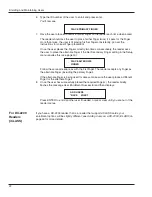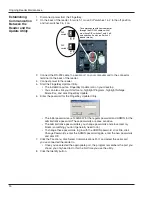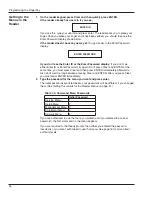
Enrolling and Maintaining Users
20
Teaching Users How to Use Readers
Most people have never used a fingerprint reader before, and some users will have
concerns. Explaining how the reader works eliminates most fears and concerns before
they occur. Inform users of these facts:
• Readers don’t identify people; they just confirm identity. For example, you can’t just put
your finger on a reader and have it know who you are; the reader can only confirm that
the finger on the reader matches the finger previously associated with a particular ID
number.
• Readers do not take an actual picture of the fingerprint that could be used for
general identification outside the reader network. Instead, they store a mathematical
representation of the print that confirms that the same finger is present as when the
entered ID number was enrolled. Readers don’t invade privacy; they guarantee it.
• Readers shine an ordinary red light, generated by a red LED, on the finger.
• Readers are as sanitary as doorknobs.
Because the reader measures the fingerprint, it’s important to place your finger on the
reader the same way every time. When you put your finger on the reader, do this:
• Place the end of your finger gently and comfortably onto the plastic window to the right
of the display; there’s no need to apply pressure.
• The first finger crease below your fingertip should rest on the ridge below the window;
don’t slide your finger forward to fit your fingertip into the groove above the window.
Use that groove only as a guide to keep your finger parallel to the window.
The first finger crease
below your fingertip
should rest on the ridge
below the window.
Figure 5-1: Finger Placement
• Keep your finger flat. You should feel the plastic across the bottom of your finger.
The reader accepts the index, middle, or ring fingers or the thumb from either hand.
(Don’t use the pinky, though; the reader may appear to enroll it, but it will generally cause
verification errors afterwards.) Since you must use this same finger for access later on,
choose a finger that is easy to place correctly; see
If Users Have Trouble Gaining Access
on page 24.
If you are using a secondary finger, the user must choose a different finger for the
secondary finger.
Eliminating
Potential User
Concerns
Correct Finger
Placement
Choosing a
Finger
















































